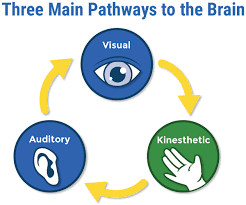iDeal Syllable Division
Effective Strategies for Teaching how to Read and Spell Multisyllabic Words
Presented by Learning Matters Ltd
Today we are viewing a webinar to support our learning in Structured Literacy.
Since reading is not a natural process, literacy must be taught through the lens of the science of reading.
Elements of Structured Literacy
Phonology
Sound to Symbol Instruction
Syllable instruction
Syntax
Morphology
Semantics
Students need to know
Syllables are made up of sounds (phonemes)
Automaticity of symbol to sound
The different syllable types in the word.
To Spell a word, the child needs to know:
- How to segment the whole word into syllables (away from print)
- How to segment each syllable into sounds (fingerspelling)
- Which written letter corresponds with that sound
- Automatically, how to form the letter that corresponds with that sound.
See the Learning matters site for Syllable Types Poster
Clap while saying each syllable. Can use pictures so sound awareness is intact.
Webinar Takeaway: Checking the understanding of what children know about syllables. Is a good way to start and know what you will teach.
Make no assumptions about what children know about reading, writing and spelling.
Short and Long Vowels
Before using the language of short and long sounds, teach open and closed syllables. Short because a consonant closes the vowel in. When we remove the consonant, it opens the vowel sound.
Closed Syllables
Once we understand short vowel sounds, we want them to know how to read CVC words.
Open Syllables
Takes one vowel to produce the one vowel sound. Use roll the dice and read.
Identify the first vowel, split through the middle and blend. Identify vowels and consonants. Where might the syllable break go? Underline the vowels with your eyes, where are the consonants?
Syllable division is taught through a scope and sequence.
Silent e Syllable
Contains a long vowel sound produced by a silent e that sits at the end of the syllable.
(Have a look at the GoNoodle syllable clip).
When teaching syllable types, it's essential for classes to be using the same language. Use silent e as it's linguistically correct as far as terminology goes.
Use no, not and note to help teach syllable rules. V/CV
Oral Language helps to build a phonological lexicon. donate V/CV do/nate. Clap the sounds prior to dividing syllables. Don't encourage children to look for words within words as this can cause confusion.
VC/V Third Strategy or Flex Rule
Draw on prior knowledge to see which words sounds right and teach the vocab. h a b / i t. Syllable types closed and closed?? leg / ume closed and silent e. vol / ume closed and silent e. We are teaching to read and spell. Spelling, hearing and re-reading the word help for it to become orthographically mapped.
Consonant le -final Syllables
When a word ends in a consonant and l e, count back three.
When reading, what we read we write, when we write, we read. Consonant l and e, go back 3. Make sure you don't get the c le confused with a suffix.
Like colostrum. One of the most common vowel sounds. Use knowledge of open and closed syllables and three syllable division.
Schwa can represent any vowel sound.
A schwa is a vowel sound in an unstressed syllable, where a vowel does not make its long or short vowel sound. It usually sounds like the short /u/ sound, but is softer and weaker. The schwa sound is the most common vowel sound (and the only speech sound with its own special name). Examples of a schwa: a: balloon.
Comes at the end of a word but can also be in the middle of multisyllabic words.
Remember that New Zealand English is quite casual.
matter...sounds like a which makes that sound a schwa sound.
Syllable Types Require Explicit Teaching using a Cummulative Scope and Sequence
Teach all the same types of words together so cognitive load is removed from the child.
We need to spend more time ensuring students are fluent at word level reading.
What is reading fluency?
- Accuracy
- Rate
- Phrasing - Prosody - Expression
1.
the patterns of rhythm and sound used in poetry.
"the translator is not obliged to reproduce the prosody of the original"
2.
the patterns of stress and intonation in a language.
"the salience of prosody in child language acquisition"
- Have students read a seen text
- Time them for 1 minute
- Count how many words they read
- Deduct errors
- Determine words per minute and consider this in relation to norms.
Reading in Connected Text and Spelling
Consonant le not to be confused for suffixes
e.g. ible meaning able to
With knowledge of suffixes you can offer extension.
Taking the Strategy to Spelling
- Saying the whole word.
- Say the word and clap syllables.
- Say the first syllable then fingerspell as this is taken to print.
- Say the second syllable then fingerspell as this is taken to print.
- have the student read the word back as you mark it.




















